Literature
Technical Tips & FAQs
Basics For Selecting A Motor Starter
The use of the term ‘motor starter’ implies that there are two components –
- Controller (Contactor)
- Overload Relay
Controller + Overload Relay = Motor Starter
Making the correct selection of the motor starter is indicative of knowing the following characteristics:
Type of Motor Starter
- Manual Starter
actuation is done manually by turning a knob on a device possessing an integral overload (i.e.; Sprecher+Schuh KTA5/KTA7 series) - Magnetic Starter
actuation is done with an electrical signal sent to the coil of a contactor (i.e.; contactor + overload)
Contactor Size and Line Power
How much current needs to flow through the power contacts of L1-T1/L2-T2/L3-T3? What line voltage is being used for the supply of power? 1Ř? – or, 3Ř?
Reference is to be made with the motor nameplate to identify the line voltage and horsepower (HP) necessary for the rating approval. The contactor selection will have a higher current (amp) rating than the FLA of the motor at the line voltage intended.
For this comparison – there are two types of contactors:
- UL/HP rated
(i.e.; Sprecher+Schuh CA7/CA8/CA9 series) - NEMA rated
(i.e.; Sprecher+Schuh CAN7 series)
Overload Relay Range
What is the FLA (Full Load Amps) of the motor load?
Dependent on the contactor selection – the overload relay is compatible for direct-connection to the contactor and the choice will possess the FLA within its given amp range. There is no calculation necessary by the user and the FLA from the motor nameplate data is intended to be dialed into the factory calibrated device.
Option(s) for overload relays:
- Advantages
wide amp ranges (wider ranges means it will cover more HPs and reduces inventory), adjustable trip classes; more accurate; less power consuming - Disadvantages
does not work with switching DC line power & does not work in line with a Variable Frequency Drive.
- Advantages
not dependent on electronics; allowable within a DC power switching circuit; okay for use with VFDs’ - Disadvantages
small amp ranges; numerous SKU #s’ required for inventory
Control power - Contactor Coil
What is the voltage of the coil to be inside the contactor?
The coil voltage selection of the contactor is aligned with the control circuit voltage. This is the control power used to energize/de-energize (close/open) the contactor.
- Common source
the term used for when the line power will be used as the control power, as well, wired directly to the contactor - Separate source
the term used for when the control voltage is not the same as the line voltage – and control power is supplied from elsewhere
Getting beyond the basics
The simplicity of providing a controller/contactor and overload in component form is catagorized as being 'Open Type'. There are other Discovery Questions that increase the acumen of getting down to the specifics of the starter requirements.
- Housing
Is the starter to be inside an enclosure? What UL integrity type atmosphere is the necessary selection for the enclosure?
- Cover Control
If there is an enclosure – are there any necessary cover control requirements for local operation on the front of the enclosure?
- Control Circuit
If there is an enclosure – is common source for control power being used? or – separate source? or – the inclusion of a control circuit transformer?
- Upstream BCPD
(Branch Circuit Protective Device)
Is the starter non-combination? – which means the BCPD is outside the panel and provided by others
Is the starter combination? – which means the BCPD is inside the enclosure of the required panel (i.e.; circuit breaker / fusible / non-fusible / self-protected Type E)
Manual Starter
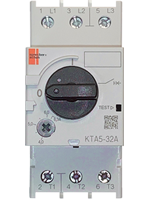

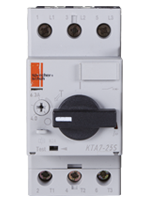
Magnetic Starter




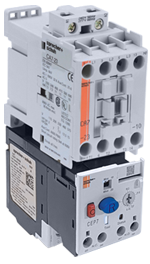
Combination Starter
Two Component Type E Combo




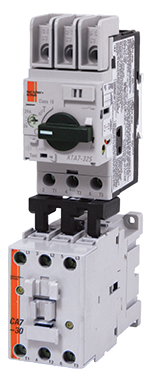
Three Component Type E Combo






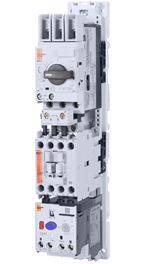
Classic Combination Starter

Contactor + Overload = Combination Starter
Categories: Contactors
2166
